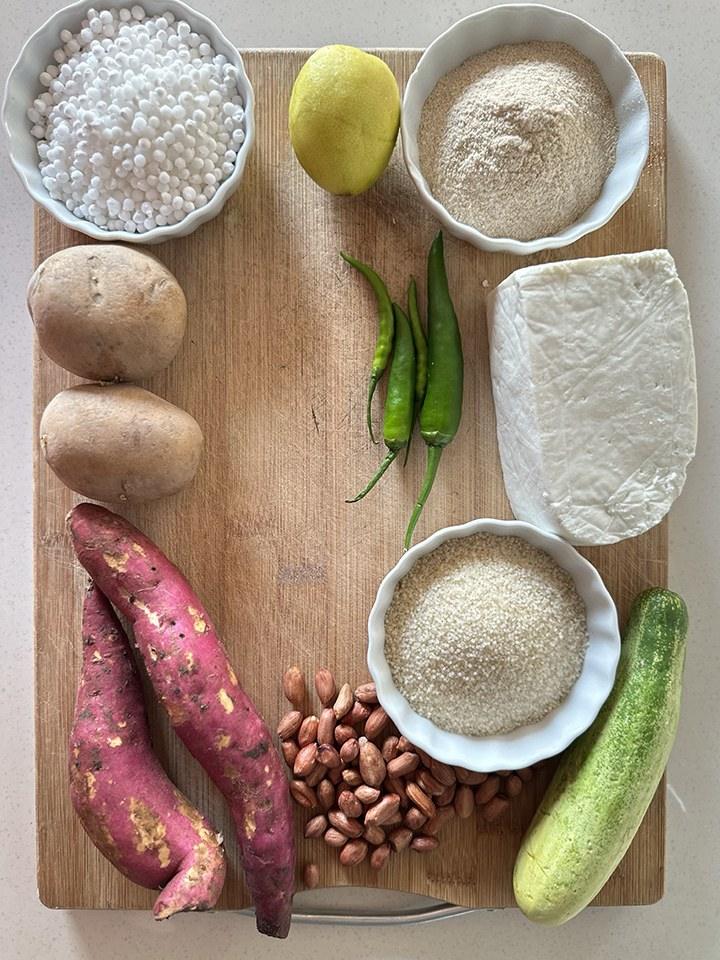Navratri, the nine-night festival dedicated to the worship of Goddess Durga, is a time of spiritual reflection, celebration, and fasting for many Hindus. This sacred period is observed twice a year, with the most prominent celebration occurring in the autumn season. During Navratri, many devotees choose to fast, adhering to specific dietary guidelines that are believed to purify the body and mind.
Understanding Navratri Fasting
Before diving into the specifics of allowed foods, it’s crucial to understand the significance of fasting during Navratri. This practice is not merely about abstaining from certain foods. it’s a spiritual discipline aimed at cleansing the body and elevating the mind. The foods permitted during this time are carefully chosen to be sattvic in nature, promoting purity, clarity, and spiritual growth. It’s important to note that fasting practices can vary between regions, communities, and even families. This guide provides a general overview of commonly accepted foods. It’s always advisable to consult with elders or local religious authorities for specific guidance tailored to your traditions.
Grains and Flours Allowed in Navratri
During Navratri, regular wheat and rice are typically avoided. Instead, the following grains and flours are commonly used:
Vegetables For Navratri
The selection of vegetables allowed during Navratri is limited. Here are the commonly accepted vegetables: It’s worth noting that tomatoes are sometimes included in this list, as they are botanically a fruit. However, their inclusion can vary based on regional customs.
Fruits For Navratri
All fresh fruits are allowed during Navratri fasting. They supply essential vitamins, minerals, and natural sugars to keep you energized. Some popular choices include: Fruits can be consumed raw, used in salads, or made into fresh juices.
Dairy Products Allowed In Navratri
Dairy plays a significant role in Navratri fasting, providing protein and calcium. Allowed dairy products include: These can be consumed on their own or used in various recipes.
Nuts and Seeds
Nuts and seeds are excellent sources of protein and healthy fats during the fasting period. Common choices include: These can be eaten as snacks or used in recipes for added nutrition and texture.
Spices and Seasonings
While the use of spices is somewhat limited during Navratri, certain spices are allowed to enhance the flavor of fasting foods: Fresh herbs like mint leaves (pudina) and coriander leaves (dhaniya patta) are also commonly used for garnishing and flavoring.
Sweeteners
To satisfy sweet cravings during the fast, the following sweeteners are allowed: These can be used in desserts, beverages, or added to fruits for a sweet treat.
Oils & Fats
For cooking fasting foods, the following oils are typically used: These oils are used sparingly, as many fasting recipes are prepared with minimal or no oil.
Additional Ingredients
Some other ingredients that are commonly used during Navratri fasting include:
Beverages
Staying hydrated during fasting is crucial. Allowed beverages include:
Preparing Navratri Fasting Meals
With these ingredients, a wide variety of delicious and nutritious meals can be prepared. Some popular Navratri fasting dishes include: Navratri fasting is a time-honored tradition. It allows devotees to focus on spiritual growth. They can also nourish their bodies with pure, sattvic foods. By understanding the foods and ingredients allowed during this period, you can observe the fast with devotion. You can also enjoy a variety of delicious, nutritious meals. Remember, while this guide provides a comprehensive overview, practices can vary. Always respect your family traditions and local customs when observing Navratri fasting. The essence of the fast lies not just in the food consumed. It also lies in the spirit of devotion and self-discipline it cultivates. May your Navratri fasting be a period of spiritual growth, physical well-being, and devotional bliss. Happy Navratri!
